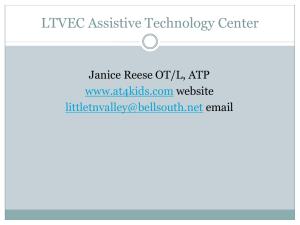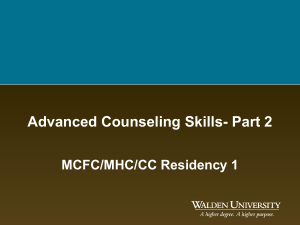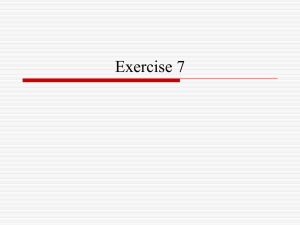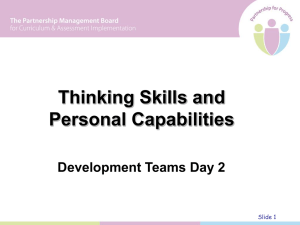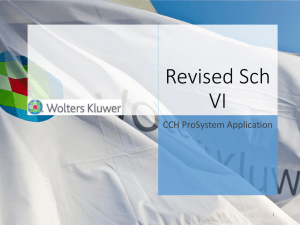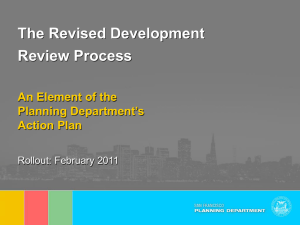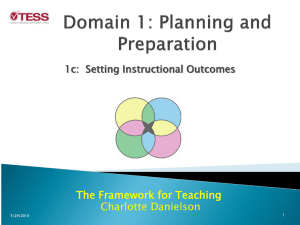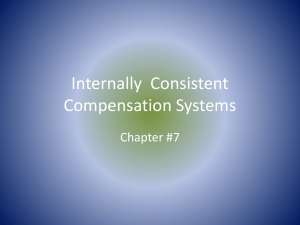Physician Note - Tulane University
advertisement
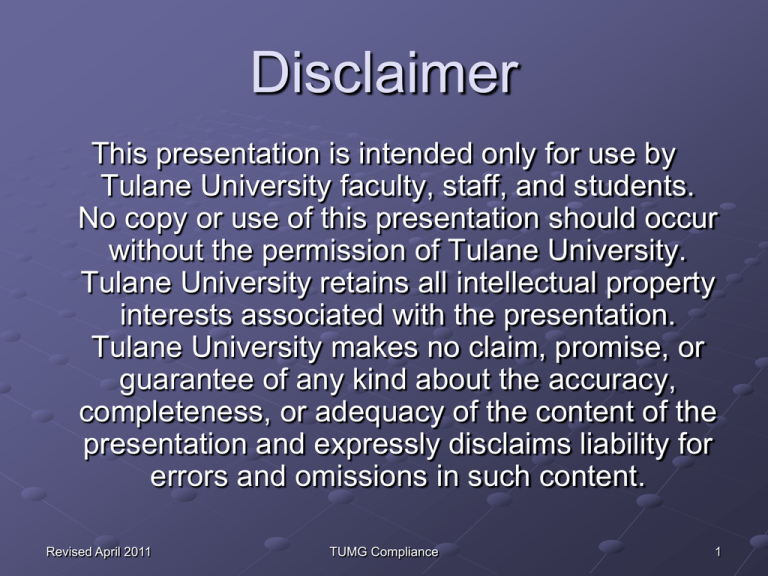
Disclaimer This presentation is intended only for use by Tulane University faculty, staff, and students. No copy or use of this presentation should occur without the permission of Tulane University. Tulane University retains all intellectual property interests associated with the presentation. Tulane University makes no claim, promise, or guarantee of any kind about the accuracy, completeness, or adequacy of the content of the presentation and expressly disclaims liability for errors and omissions in such content. Revised April 2011 TUMG Compliance 1 Documenting an Outpatient Visit Overview of Basic Principles Before viewing, print the file: Documenting an Outpatient Visit which contains a handout and a quiz Revised April 2011 TUMG Compliance 2 Read Before Proceeding Physicians and Staff may earn one compliance credit by viewing this presentation, completing the assessment, and faxing the assessment to the HIPAA Compliance Office: 504-988-7777 This presentation may be viewed for compliance credit only once in a fiscal year (July 1 - June 30). To check to see how many compliance credits you have and to see which training sessions you have completed, contact the University Privacy and Contracting Office at 504-988-7721 Revised April 2011 TUMG Compliance 3 It is the policy of TUMG to provide healthcare services that are in compliance with all state and federal laws governing its operations and consistent with the highest standards of business and professional ethics. Education for all TUMG physicians is an essential step in ensuring the ongoing success of compliance efforts. Revised April 2011 TUMG Compliance 4 This is the first of a 6-part series focused on documenting outpatient services. Part 1: Overview of Basic Principles Part 2: Documenting a History Part 3: Documenting an Exam Revised April 2011 Part 4: Documenting Medical Decision Making Part 5: Time-Based Codes Part 6: Linking to Resident Notes TUMG Compliance 5 TUMG Physicians are responsible for documenting their outpatient visits and selecting the level of service to be billed to the carrier. Revised April 2011 TUMG Compliance 6 Purpose of Presentation To provide information regarding documenting and selecting a level of service for outpatient visits To provide links to source documents that will assist physicians in the understanding and application of documentation guidelines. Revised April 2011 TUMG Compliance 7 The WYSI-WYG Principle (WYSI-WYG) The WYSIWYG principle defines the relationship between documentation and level of service What You See Is What You Get Corollary: If it isn’t written, it didn’t happen, and it can’t be billed Revised April 2011 TUMG Compliance 8 An understanding of Evaluation and Management Guidelines, paired with the WYSI-WYG Principle, greatly reduces the potential for Level of Service – Documentation Mismatches Physician: I know the service is a 99204 Reviewer/Coder: I see a 99202 Physician Note Chief Complaint Expanded History Detailed Exam Moderate Decision Making Revised April 2011 TUMG Compliance 9 Outpatient Visit Essentials 1) Documentation that supports the level of service billed Does the note contain all the elements required for the level of service selected? 2) Clearly established Medical Necessity Does the note provide a clear reason for the visit, and are the assessment and plan clearly related to the reason for the visit? Revised April 2011 TUMG Compliance 10 It’s a matter of writing and/or dictating… History Physician Note Chief Complaint History Exam Medical Decision Making To avoid “underdocumenting,” the physician’s note must reflect all the elements of History, Exam and Medical Decision Making performed for each outpatient encounter. Revised April 2011 TUMG Compliance 11 To insure that documentation supports the level of service: Understand and apply General Principles of Medical Record documentation Understand and apply Evaluation and Management documentation guidelines click here: (jump to slide 18) Link to other supporting documentation (resident notes, staff notes, patient questionnaires) Links to Documentation Resources (click on the link to open) 1995 General Principles of Medical Record Documentation 1997 General Principles of Medical Record Documentation Linking to resident notes and teaching physician guidelines Revised April 2011 TUMG Compliance 12 To insure that Medical Necessity is established a note should contain A clearly stated chief complaint click here A clearly stated diagnosis(es) or, in absence of a diagnosis, signs and symptoms A clearly stated or easily inferred rationale for ordering diagnostic or other ancillary services WORD OF CAUTION: The only instance where information can be inferred is for ordering diagnostic or other ancillary services. The chief complaint and the diagnosis cannot be inferred; they must be clearly documented Revised April 2011 TUMG Compliance 13 Auditors are not psychics I sense a complete review of systems…but the crystal ball is cloudy regarding a chief complaint and the exam… Medical Record Reviewers or Coders do not fill in gaps in a note. Note Revised April 2011 Each outpatient visit must stand alone. Reviewers will not look back at prior notes to support a level of service. TUMG Compliance 14 Need More Information? The TUMG Compliance Educator / Audit Specialist is available to any physician/section/department that would like further information on outpatient documentation guidelines or other compliance topics. Contact: Sue Straumanis, CPC, CHC sstrauma@tulane.edu Phone: 504-988-6807 Revised April 2011 TUMG Compliance 15 End of Presentation To Earn Compliance Credit: Complete and Sign the “Documenting an Outpatient Visit” Quiz Fax to: 504-988-7777 Revised April 2011 TUMG Compliance 16 Chief Complaint “The Chief Complaint is a concise statement describing the symptom, problem, condition, diagnosis, physicianrecommended return, or other factor that is reason for the encounter” This is usually stated in the patient’s own words. Corollary: The Chief complaint cannot be inferred. Click here to return to main presentation Source: Medicare Physician Guide: A Resource for Residents, Practicing Physicians, and Other Healthcare Professionals. 11th Edition – Oct. 2009, pg. 102. Revised April 2011 TUMG Compliance 17 Basics of E/M Coding – 6 slides The Meet or Exceed Principle New Patients OR Initial Consults, the Physician must MEET or EXCEED documentation requirements for three of three E/M Components History Exam Medical Decision Making Established Patients OR Follow-Up Consults, the Physician must MEET or EXCEED documentation requirements for two of three E/M Components. History/Medical Decision Making Exam/Medical Decision Making There are six slides in this section of the presentation– at slide 6 there is a link to return to the main presentation Revised April 2011 TUMG Compliance 18 A word about Established Patient documentation Although Established Patient/Follow-Up Consult E/M level of service is based on two of three E/M components, that does not mean that the physician should not document elements of all three E/M components if the information is germane to the treatment of the patient. Medical Decision Making must always be one of the two components when determining level of service to ensure medical necessity is being met. Revised April 2011 TUMG Compliance 19 New Patients – Selecting A Level of Service E/M Code and Visit Time (in minutes) 1- History of Present Illness 2 – Exam 3 – Medical Decision Making 99201-10 99241-15 Problemfocused Problemfocused Straight forward 99202-20 99242-30 Expanded Expanded Straightforward 99203-30 99243-40 Detailed Detailed Low 99204-45 99244-60 Comprehensive Comprehensive Moderate 99205-60 99245-80 Comprehensive Comprehensive High A physician note documents a detailed History, expanded Exam and Moderate Medical Decision Making. What New Patient code or Consult code is supported by the documentation? Revised April 2011 TUMG Compliance 20 New Patients – Selecting A Level of Service E/M Code and Visit Time (in minutes) 1- History of Present Illness 2 – Exam 3 – Medical Decision Making 99201-10 99241-15 Problem-focused Problem-focused Straight forward 99202-20 99242-30 Expanded Expanded Straight-forward 99203-30 99243-40 Detailed Detailed Low 99204-45 99244-60 Comprehensive Comprehensive Moderate 99205-60 99245-80 Comprehensive Comprehensive High With new patients or consults, the LOWEST of the three E/M key components documents determines the level of service. In this case, a 99202 or 99242. Revised April 2011 TUMG Compliance 21 Established Patients – Selecting A Level of Service E/M Code and Visit Time (in minutes) 1- History of Present Illness 2 – Exam 3 – Medical Decision Making 99211-10 N/A N/A N/A 99212-20 ProblemFocused ProblemFocused Straight-forward 99213-15 Exp. ProblemFocused Exp. ProblemFocused Low 99214-25 Detailed Detailed Moderate 99215-40 Comprehensive Comprehensive High A physician note documents a detailed History, expanded Exam and Moderate Medical Decision Making. What established patient code is supported by the documentation? Revised April 2011 TUMG Compliance 22 Established Patients – Selecting A Level of Service E/M Code and Visit Time (in minutes) 1- History of Present Illness 2 – Exam 3 – Medical Decision Making 99211-10 N/A N/A N/A 99212-20 ProblemFocused ProblemFocused Straight-forward 99213-15 Exp. ProblemFocused Exp. ProblemFocused Low 99214-25 Detailed Detailed Moderate 99215-40 Comprehensive Comprehensive High With established patients, the LOWEST of the two highest E/M key components documented determines the level of service. In this case, documentation supports a level 99214. *Click here to return to main presentation* Revised April 2011 TUMG Compliance 23
